
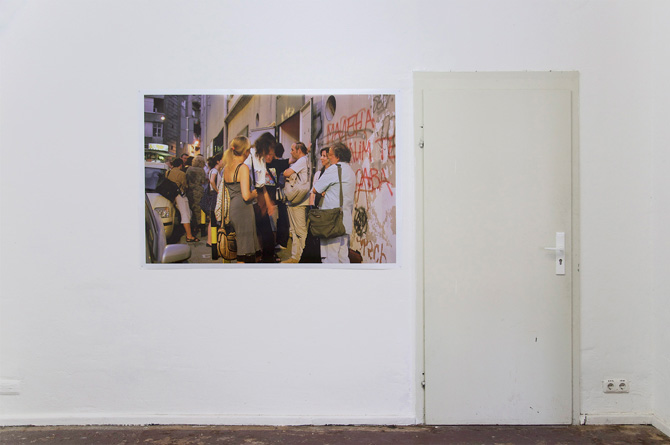

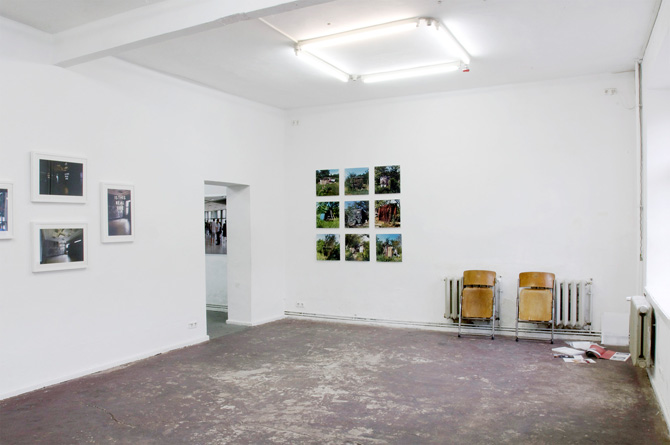
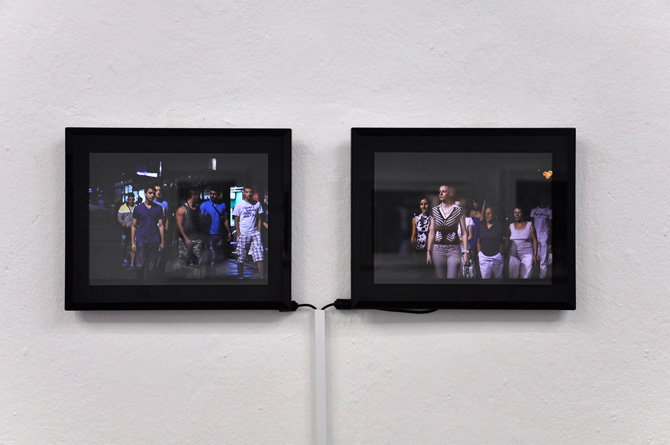
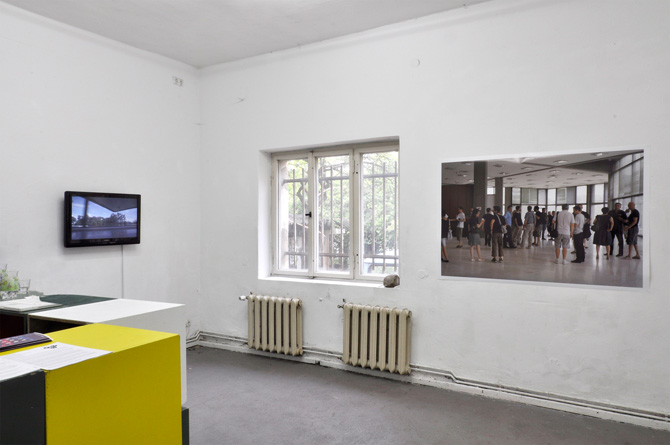
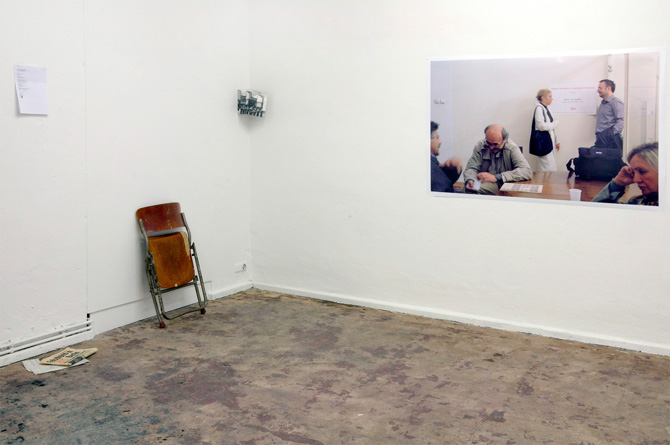
all works courtesy the artists, during the Serbinale exhibition in Berlin / photo courtesy Serbinale
BerlinBrückeBelgrad – the bridge from Berlin to Belgrade – is not exactly a relation that has been famous for its artistic exchange. A couple of people, namely the organizers of the new-found SERBINALE, are trying to change these circumstances and developed a cultural exchange festival. One of the events was the 3 day exhibit BerlinBrückeBelgrad at General Public by the end of last August, which included the four Serbian media and installation artists Goran Micevski, Slobodan Stošić, Saša Tkačenko and Ivan Petrović. I got really curious about this project and asked the curator Erik Herkrath about the Serbian art scene and the topics of the exhibition.
Erik Herkrath: First of all I have personal relations with Serbia. I know many Serbians living in Berlin and I know how their situation is here and in Serbia. That is also why I already did an exhibition with four Serbian artists in 2008. And when the idea of Serbinale came up, the initiators asked me, if I could take care of the visual arts section, which I gladly did.
Anna: How are the exhibited artists connected?
Erik: There are several connections between the four artists. They all are living in Serbia. Three in Belgrade and one in Novi Sad. Then they all share the concern, that there isn't enough awareness for visual arts and especially critical contemporary art in serbia. Some of them, like Sasa Tkacenko or Slobodan Stosic addressed this issue directly in their works. The works by Ivan Petrovic and Goran Micevski are great social studies, which helps to understand the current cultural situation.
Anna: The exhibition had a strong photo and video focus – how did that come about?
Erik: This was in part because of the small budget we had. Since we didn't get funding from the Serbian Cultural ministry (the work we did is exactly what they write in their cultural support policy, still we received no funding), I had to select works, which could be shipped easily to Berlin. Another reason is that photography is a documentary medium, which the audience can directly relate to. So it was obvious to include photography in the concept of the exhibition. Still I would be very happy to include paintings and sculptures in the next Serbinale. There are great painters and sculptors in Serbia, who I'd like to show next time.
Anna: There was a little hill of ash on the floor in the back room. What is the story of it?
Erik: Most people probably didn't see or realize that this was part of the installation. Slobodan Stosics work 'Usefulness' deals with the presence and acceptance of Art Museums in Serbia. The ashes derived from burned artworks, which took place in Novi Sad as a protest against the bad situation for contemporary artists. As not many people took notice of that, it was a great analogy to just put the ashes on the floor, where nearly everybody just walked over it.
Anna: The photos portraying suburban serbian teenagers in their party outfits was a striking social observation. How would you say is the serbian art scene connected to the population? Is it merging, or is the art scene taking place in a parallel world?
Erik: I would say that the art scene is more in a parallel world. Of course you have this in Germany, too. Many people have nothing to say about art nor any connection to it. Still you have more of a presence here than in Serbia. There is no advertisement of blockbuster exhibitions like "Kapoor in Berlin", which aim to a broad audience. And as far as I know there are not many companies who have their own art collection. But the overall part of the people probably have other thoughts than about art. A fact to underline this are the few commercial galleries, which shows there is not much interest to buy and support art.
Anna: How is the serbian art scene from your point of view? What are the tendencies?
Erik: It is always difficult to brand a whole art scene. I don't want to stress stereotypes, but there is a good classical education of painting, print-making and creating sculptures. In my point of view this is a good starting point for young artists, they just need to get the leap out of the traditional boundaries and go beyond that. With the internet you have a connection in the whole world and many Serbian artist also emigrate to foreign countries. Actually it is quite common for young artist to leave Serbia. They have good reasons to do that, due to the economical situation and the failure of the cultural policy. Still I admire the ones who stay and keep being critical, try to improve the situation and produce great work of arts.
-> serbinale.org
-> serbinale.org
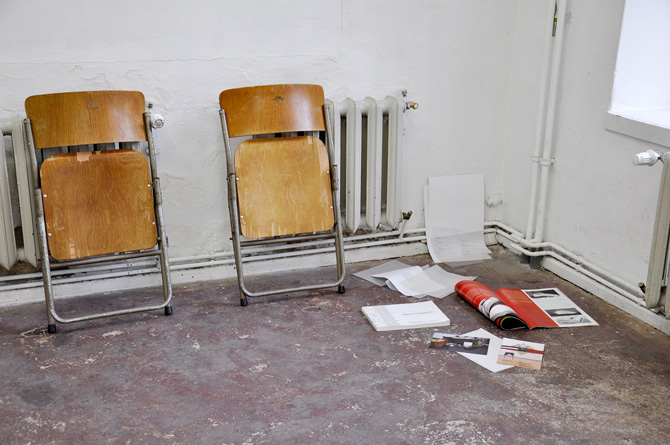

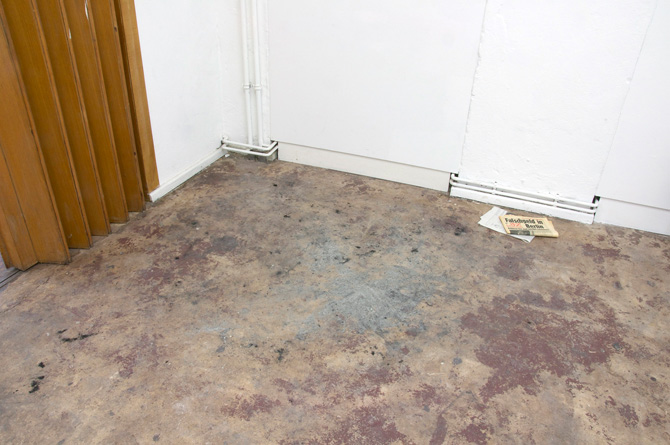
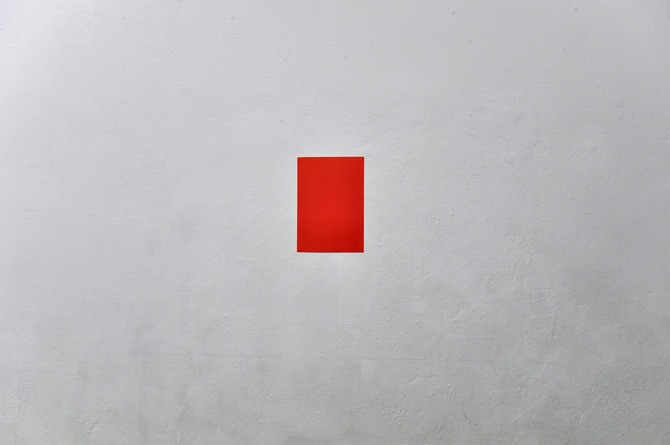
all works courtesy the artists, during the Serbinale exhibition in Berlin / photo courtesy Serbinale
